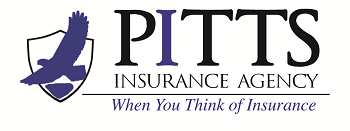
Mitigating Winter Weather Risks
This winter is the latest in a barrage of consecutive winter seasons where large parts of the country have been battered by heavy snow, sub-zero temperatures, and other dangerous icy conditions. The 2021 winter season alone saw a winter storm event that cost over
. The destruction caused by the winter storm in December of 2022 is still being calculated and included widespread frozen water pipes that led to extensive water damage in many homes, businesses, and to other critical infrastructure.
This risk can put a freeze on many aspects of an organization’s operations. And while those in some areas of the country may think they’re safe from these havoc-inducing wintry episodes,
have experienced below-freezing temperatures in recent years. We’ll take a look at how preparing, mitigating, and responding to winter weather can help organizations stay safe.
Winterize Your Fleet with Preparation
From roads encased in black ice to blinding snow flurries, driving in winter weather can become dangerous in an instant. The most effective risk mitigation approach is obvious-don’t drive during inclement weather. However, if vehicles must be used during these deadly conditions, the following are ideas to remember to better protect your drivers and overall transportation operation.
- Stay informed of weather conditions. Always stay informed, especially if the forecast calls for any inclement weather. While weather forecasts can be inaccurate, plan for the worst to ensure your operations are ready.
- Keep drivers up to date on training. All drivers should be up to date with their regular defensive driver training, including training specific to dealing with operating a vehicle in wintry conditions, from maneuvers when hitting patches of ice to knowing what to do if the driver gets stuck on the road.
- Keep emergency preparedness kits up to date. Be sure each vehicle’s emergency preparedness kit is up to date and includes items for cold weather such as a snow brush, shovel, windshield washer fluid, warm clothing, cat litter for traction, and blankets.
- Prioritize vehicle maintenance. Vehicle maintenance is always important, but especially in cold weather. Pre- and post-trip inspections should be completed and items such as wipers, lights, and snow tire chains should be in good working order.
- Consider implementing vehicle telematics. Vehicle telematics can help add another level of protection, from locating vehicles that are stranded in the snow through GPS technology to getting vehicle health alerts. PHLYTRAC is a no-cost telematics solution provided to PHLY auto insurance clients.
Fortify Your Property Against Winter Damage
Falling snow can be picturesque, but the weight of accumulated snow on roofs can cost a pretty penny. In addition to snow, the cold temperatures can be detrimental to buildings and other property. The COVID-19 pandemic also continues to compound this risk by adding another hazard to consider as many buildings are reopening after long periods of being dormant and some still remain vacant or unoccupied. The following should be considered when preparing property for oncoming cold snaps.
- Use technology to help prevent pipe freeze. Water damage caused by burst pipes is one of the leading causes of property damage during cold weather events. There are several actions that can be taken to help reduce the risk of damage from frozen pipes, including employing technology to monitor temperatures and the presence of water. PHLYSense is a no-cost property monitoring system available to PHLY clients with property coverage.
- Consider having infrared inspections completed. These inspections can help spot areas that need more insulation and can also show where cold is intruding or heat is escaping, which can increase energy costs.
- Safely remove ice and snow from roofs. This can help prevent roof collapse and other damages caused by the sheer weight of ice and snow. Be mindful of ice dams, which can prevent melting snow from properly flowing off the roof and then back up under shingles, into ceilings, or even inside walls.
- Follow safety guidelines when using space heaters. Space heaters can be a fire hazard if used incorrectly. Using them at least three feet away from combustibles, verifying it is Underwriting Laboratory (UL) listed, and confirm it includes an automatic shut-off if it tips over are among several safety measures to consider.
Other fire risks to property that may increase around the winter months include residential cooking and the use of candles and other special elements during the holiday season.
Insulate your Operations from Winter Liabilities
In addition to safeguarding drivers, vehicles, and buildings, it’s important to keep your organization’s visitors and others safe. Winter weather can introduce hazards that can produce injuries, and being the property owner or operator, your organization could be liable. The following are some of those hazards and suggestions to mitigate them.
- Implement a slip, trip, and fall (STF) prevention program. STFs are the most common injury resulting from wintry conditions and a strong STF prevention program can help keep people on their feet. This includes salting or using an ice melt product on walkways, clearing snow from high traffic areas, and continuously monitoring these areas.
- Ensure good building and grounds upkeep and maintenance. This not only protects the building, but can also protect people. Removing snow and ice from roofs can prevent injuries from heavy snow or ice falling on visitors. In addition, keeping gutters, downspouts, and hand railings in good condition and properly positioned can help prevent STFs.
- Hire reputable contractors. If using contractors to help with snow and ice removal or any other service, it’s important to be sure they’re reputable. They should be able to provide good references and adequate insurance in place. You should request Certificates of Insurance and ask you organization be listed on their policy as an Additional Insured.
Taking the time to adopt these practices can help your organization avoid a frozen hellscape of vehicle accidents, burst pipes, and injured patrons, and instead enjoy the season as a winter wonderland.
Blog Credit to our Partner: Philadelphia Insurance Company
